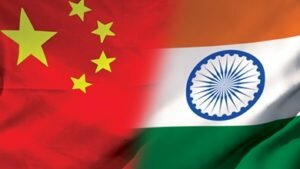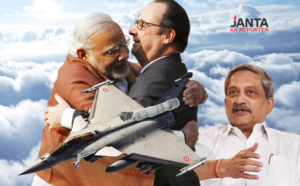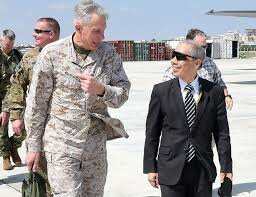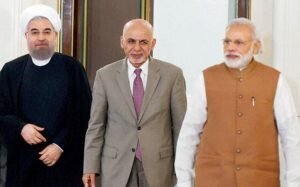
The historically multicultural civilization of Russia is poised to see a boom in Muslim birthrates and migration in the coming decades as its indigenous Muslims grow at a record pace in parallel with the state’s possible policy of “replacement migration” from Muslim countries, all of which could collectively contribute to reshaping the very nature of this cosmopolitan civilization by the middle of the century.
Russia Might Be 30% Muslim (Or More) By 2030
Russia’s grand mufti Ravil Gainutdin quoted expert analyses last month when announcing that Muslims are expected to comprise approximately 30% of his country’s total population within the next 15 years, which is roughly double their current number and is attributable to very high birthrates in the Muslim-majority autonomous republics of the Northern Caucasus and Tatarstan. Such a statement would have immediately captivated the attention of the Mainstream Media and led to dramatic debate if it was made by the grand mufti of any Western country but was strangely ignored by most of the global media in this specific case and remains so to this day, despite the enormous socio-political consequences that it could have both for Russia and the rest of Eurasia.
Furthermore, the influential Russian business daily Vedomosti just published a report about how migration to Russia has hit a record low and is no longer able to cancel out the country’s population decline, pointing out how migrants are either staying in their home regions or going Westward instead of moving to Russia. Although the outlet cites a recent government plan to attract 10 million Russian-speaking migrants by 2025, it also quotes an expert report published by the Higher School of Economics suggesting that “Russia could recruit from Iran, Afghanistan, Pakistan, India and the Middle East — but has little experience with mass migration from countries with such a large ethnocultural gap”, though that nevertheless seems to be the only sustainable option for so-called “replacement migration”.
Putin ≠ Merkel
Before Western readers begin to overreact and imagine that President Putin is about to “pull a Merkel” by plunging his country into a series of seemingly never-ending domestic crises caused by the large-scale influx of civilizationally dissimilar migrants and the very high birthrate of his country’s indigenous Muslim population, one should spend the time to thoroughly study then-Prime Minister Putin’s 2012 immigration manifesto about “Russia: The Ethnicity Issue” that he published when he was running to return to the Presidency. The Russian leader clearly explained why he regards the West’s “multicultural” model as a failure but importantly noted that his country could never follow the “ethnic state” model that some of its European counterparts do because that would “make people destroy their homeland with their own hands.”
President Putin explained that Russia has always existed as a multicultural civilization united by a common cultural code and values whose diverse members historically respected their countrymen’s many differences, pointing to the pivotal role that educational programs played in this as well as the state’s efforts to assimilate and integrate the countless minorities within its borders who didn’t identify as Orthodox Christian Slavic Russians. He preached the need for people to identify more with a civic nationalism than an ethno-regional or religious one in order to maintain national unity, and he also proposed the visionary idea of “close integration across the post-Soviet space [being] a real alternative to uncontrolled migration”. This last point would later be used as one of the justifications for the Eurasian Economic Union two years later.
“Weapons Of Mass Migration”
Returning to the present and appreciating Russia’s richly diverse civilizational past, it would be premature for people to panic about the country’s changing demographics and the possibility of large-scale “replacement migration” from Muslim-majority countries in the “Global South” like the Higher School of Economics predicted is possible if the low birthrates of Russia’s titular Orthodox Christian Russian Slavic people and declining post-Soviet migration trends aren’t sufficient for naturally replacing the population. As noted by President Putin himself in his 2012 manifesto, the state is serious about integrating and assimilating all new arrivals, understanding that the failure of this task could have national security consequences by provoking the same type of unrest that he already saw occurring in Western Europe a full three years before the infamous 2015 Migrant Crisis brought this to global attention.
Ivy League researcher Kelly M. Greenhill prophetically predicted the many socio-political problems that the EU would eventually experience in her 2010 book about “” in which she elaborated on her extensively documented thesis that mass migration flows have been weaponized by state actors dozens of times since the end of World War II. This lesson certainly wasn’t lost on Russia, which is worried about an outbreak of Afghan-originating Daesh terrorism in Central Asia catalyzing a similarly weaponized process of mass migration into its borders, ergo its proactive policy towards Afghanistan aimed at preemptively thwarting this scenario. Russia has no problem with Muslim migration per se, it just doesn’t want it to be uncontrollable and possibly exploited as a cover for terrorists to infiltrate the country.
The “Ummah Pivot”
In fact, it can actually be argued that Russia’s “Ummah Pivot” in recent years is partially geared towards “winning hearts and minds” across the international Muslim community in advance of potentially encouraging controlled migration from this part of the world and selectively choosing the best individuals that it believes could both fulfill the country’s labor demands but also most easily assimilate and integrate into its society. This forward-looking observation complements the prediction put forth by the experts from the Higher School of Economics but builds upon it by reminding the reader of President Putin’s 2012 immigration manifesto and demonstrating how he could leverage his civilization-state’s recent Eurasian foreign policy successes in the “Ummah” with its future population needs across the coming decades in a responsible way that stays true to Russia’s values.
Before anyone dismisses this as pure “speculation”, they should be made aware that “Russia is interested in having the visa restrictions with Arab countries lifted and is doing everything possible to accelerate this process through negotiations”, according to Russian Special Presidential Envoy for the Middle East and Africa and Deputy Foreign Minister Mikhail Bogdanov earlier this week. This speaks to the sincere desire of the Russian leadership to integrate their country with the rest of Eurasia and especially the Muslim-majority “Ummah” countries of the “Global South”, knowing that this will probably result in more (possibly illegal) migration into their country but apparently not minding it too much so long as it achieves the “greater good” of promoting multipolarity across the hemisphere.
Concluding Thoughts
There should be no doubt that Russia is about to have many more Muslims, both due to the high birthrate of its indigenous Muslims and the very high likelihood of encouraging “replacement migration” from Muslim-majority countries in the “Global South” (which expands upon Moscow’s recent “Ummah Pivot”), but this shouldn’t be a cause for alarm because of the seriousness with which the state treats the assimilation and integration of is minorities. It can be expected that fringe elements of its titular ethnicity might engage in hate crimes and other forms of violent right-wing extremism, but therein lays the relevance of the controversial Article 282 for preemptively dealing with this before it becomes a problem like in Europe. As such, Russia’s Muslim future appears bright and will more closely connect it to the growing economies of Eurasia.
DISCLAIMER: The author writes for this publication in a private capacity which is unrepresentative of anyone or any organization except for his own personal views. Nothing written by the author should ever be conflated with the editorial views or official positions of any other media outlet or institution.





